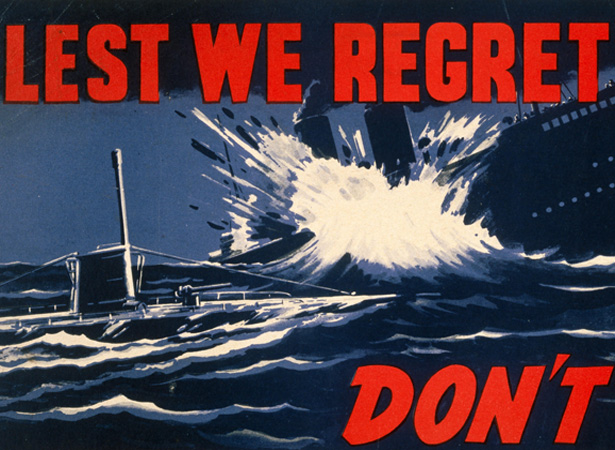
The Battle of the Atlantic was one of the most important campaigns of the Second World War. It was certainly the longest, lasting 2074 days: from 3 September 1939, the day war was declared, to 7 May 1945, the day Germany surrendered. Allied ships were sunk with loss of life in the Atlantic on both those days, and on nearly every day in between.
The Battle of the Atlantic also ranged across vast distances, from South America’s River Plate, where the New Zealand cruiser HMS Achilles helped trap the Admiral Graf Spee in December 1939, to the freezing Arctic Sea, through which Allied convoys shipped vital supplies to the Soviet Union.
Britain was a maritime power with the world’s largest merchant fleet, but its heavy dependence on imported food (including meat and dairy products from New Zealand), fuel and raw materials made it vulnerable to a blockade. Germany’s Atlantic strategy was simple: to starve Britain into submission by destroying merchant ships and their cargoes faster than they could be replaced. As Prime Minister Winston Churchill remarked in 1941, ‘Everything turns on the Battle of the Atlantic.’
Although mines, bombers and surface ships would claim many victims, the deadliest threat was the submarine, or U-boat. The Allies’ defence against, and eventual victory over, the U-boats in the Battle of the Atlantic was based on three main factors: the convoy system, in which merchant ships were herded across the North Atlantic and elsewhere in formations of up to 60 ships, protected, as far as possible, by naval escorts and patrolling aircraft; the painstaking, secret work of Allied signals intelligence, especially the breaking of the U-boats’ sophisticated Enigma code; and, especially from 1943, the deployment of longer-range aircraft and more powerful, better-equipped escort forces.
The campaign took a significant turn on 24 May 1943: the commander-in-chief of the German Navy, Admiral Karl Dönitz, alarmed at the heavy losses inflicted by increasingly strong Allied escort forces (41 U-boats were sunk that month), ordered the temporary withdrawal of U-boat ‘wolf packs’ from the North Atlantic. The U-boats would soon return, and the threat to Allied shipping would remain until May 1945, but Germany would never regain the initiative.
Although it was waged half a world away from New Zealand, the Battle of the Atlantic was vital to this country’s interests. A German victory would have severed our links with Britain and hugely undermined the Allied cause, with grave consequences for New Zealand. Thousands of Kiwis took part in this bitter struggle, manning the warships of the Royal Navy and Royal New Zealand Navy, the troopships, freighters and tankers of the Merchant Navy, and the aircraft of RAF Coastal Command and the Navy’s Fleet Air Arm. Many served with distinction, including Coastal Command pilot Lloyd Trigg, who won the Victoria Cross in August 1943 for a ‘masterly attack’ which sank U-468. His Liberator bomber was lost with all its crew, and his posthumous VC was awarded on the evidence of survivors from the U-boat.
Read more on NZHistory
The Battle of the Atlantic – The Merchant NavySecond World War – The Royal New Zealand NavyOverview: 1913-1945 – Royal New Zealand Air ForceThe grand plan – D-DayInto the South Atlantic – Battle of the River Plate
External links
How to cite this page
'Turning point in Battle of the Atlantic', URL: https://nzhistory.govt.nz/page/turning-point-battle-atlantic, (Ministry for Culture and Heritage), updated 20-Jan-2021

Community contributions